Comparing the Innorel RT90C and the ZWO TC40 tripods
When I decided to fully migrate to harmonic mounts and get ZWO AM3 in addition to the AM5 I already use for a while, I was thinking, if it makes sense to invest in the second TC40 tripod from ZWO. Eventually, I decided to get Innorel RT90C (also known as LT404C). It seemed to be in use for astrophotography by several folks, but the information about this was scattered. I thought, I should close the gap 🙂
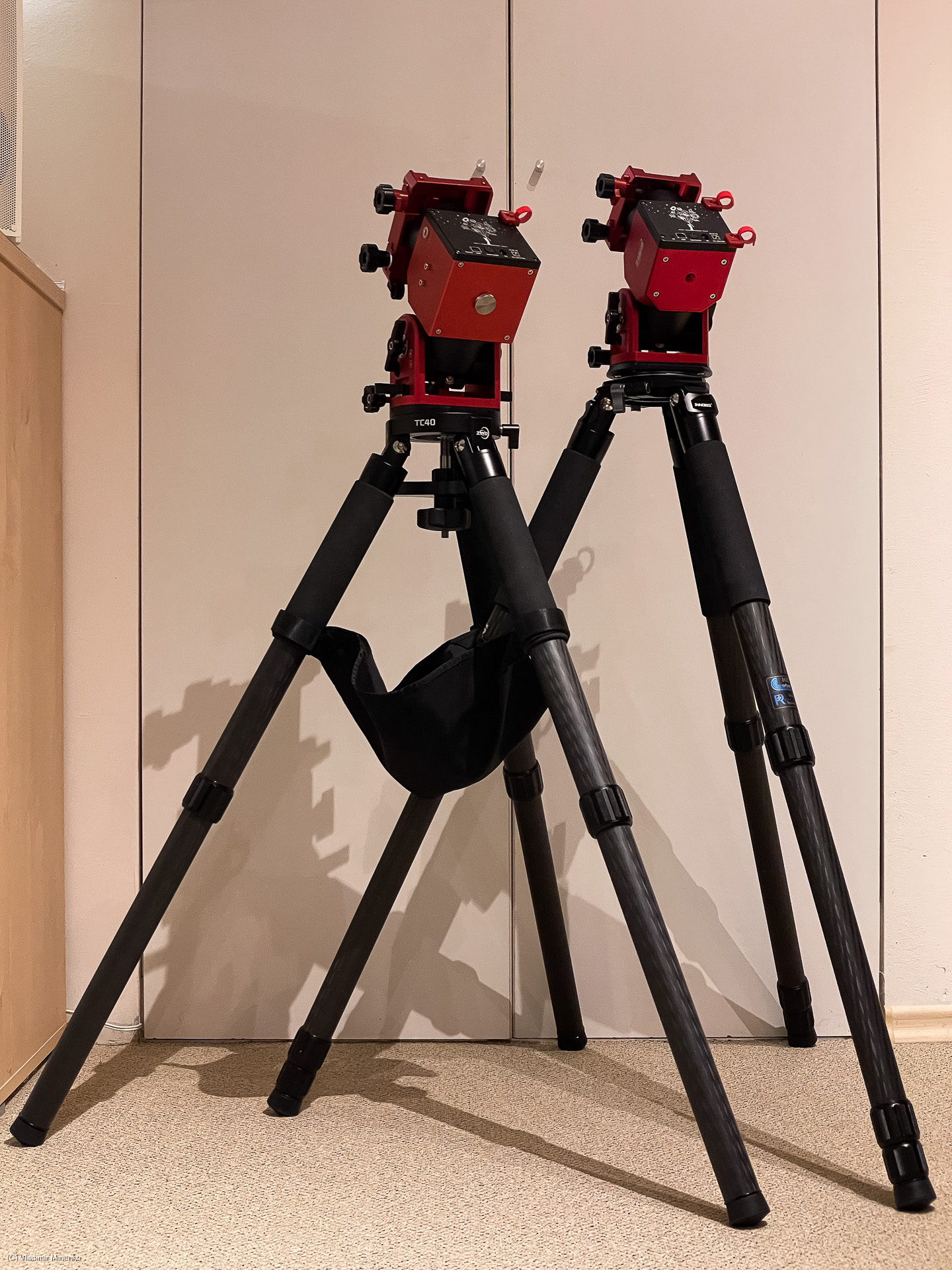
Both tripods are very similar in their design and construction. There are the main functional differences:
| ZWO TC40 | Innorel RT90C (LT404C) |
|
|
The similarities in the dimensions, materials and the mechanical design of the leg mounting on the top as well as of the first (and last for TC40) two leg sections makes you think that the mechanical stability for astrophotography should be the same. And I believe, it actually is. Most astrophotography users will extend only one leg section on Innorel RT90C, but others can still be used for regular photography. You certainly can extend more sections for astrophotography as well, but each next one will reduce the total mechanical stability and rigidity.
The picture on the top of the page shows that Innorel RT90C tripod (on the right) is slightly higher than ZWO TC40, even though its leg sections are slightly shorter. This comes through additional retracted leg sections.
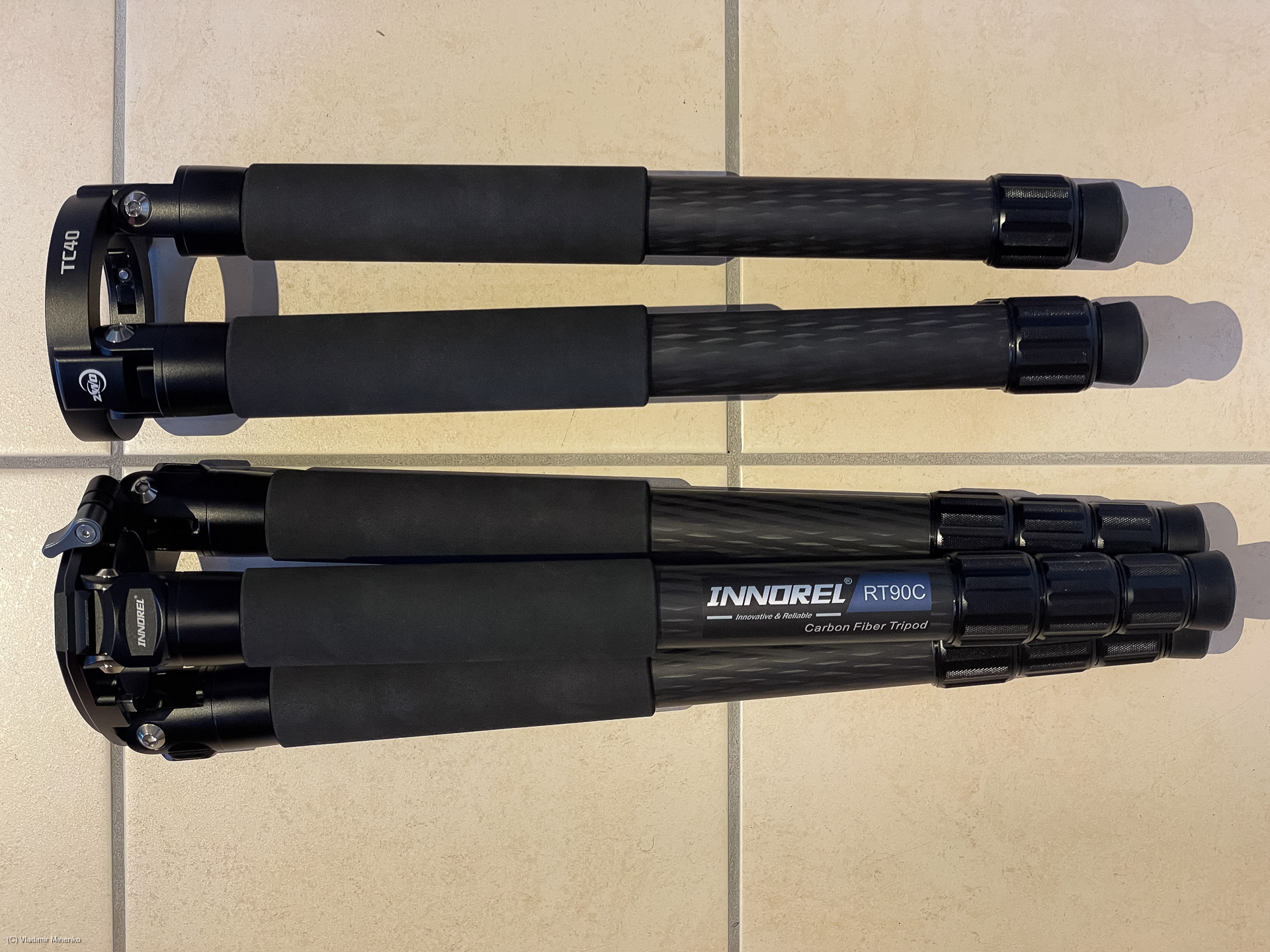
The most of the 557g of additional weight should also come with that additional leg sections.
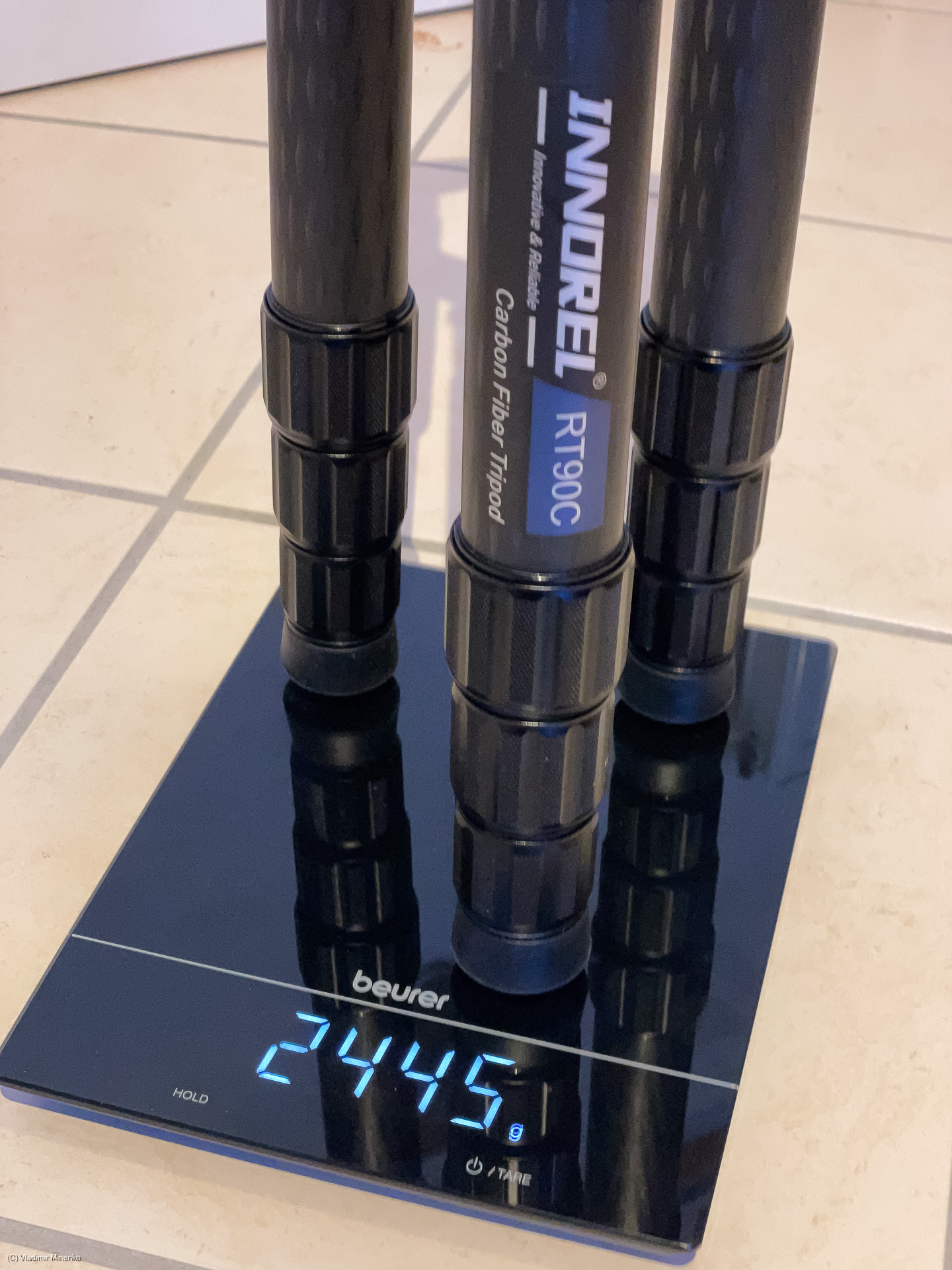
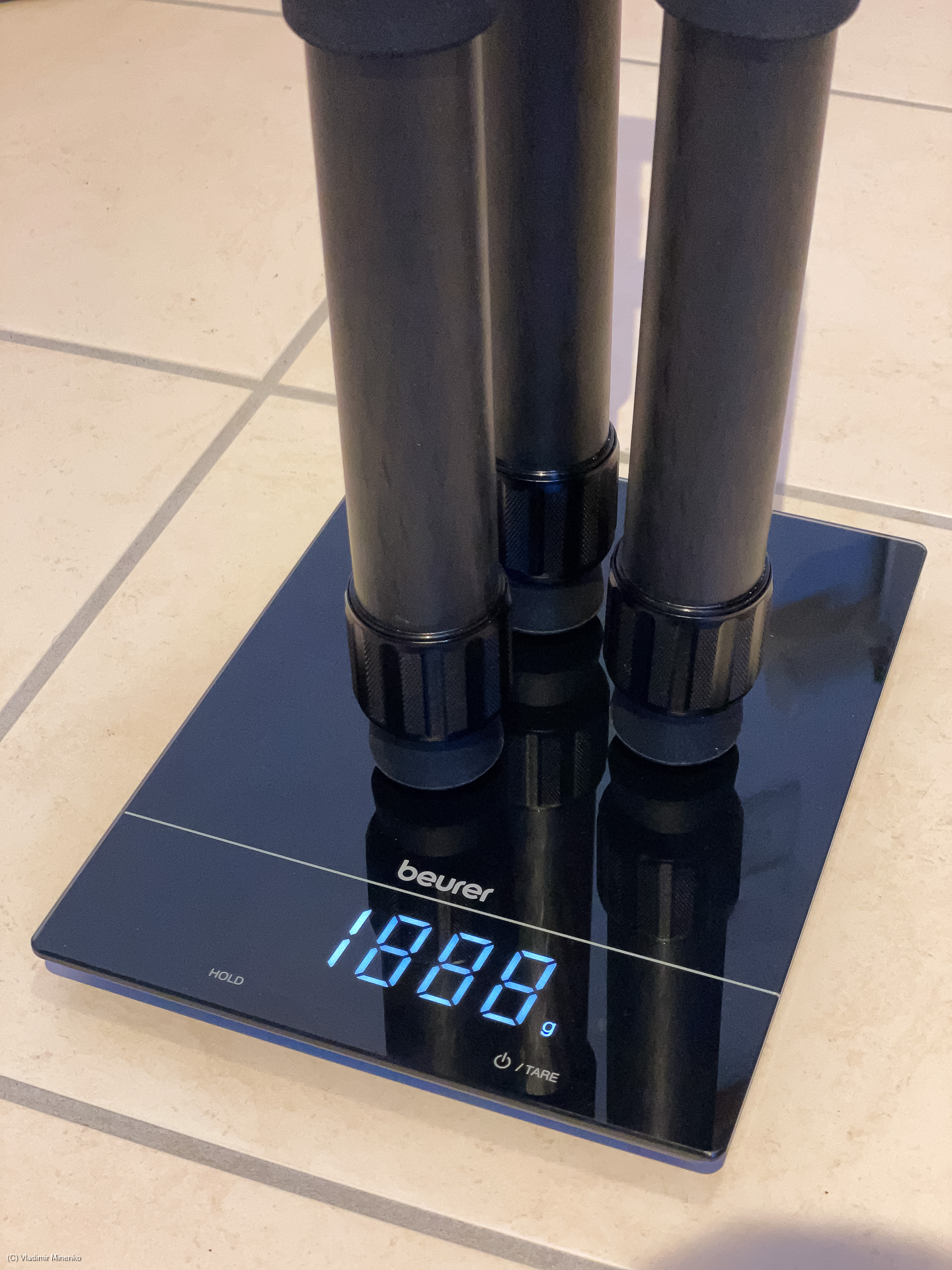
Innorel RT90C uses the popular 85mm size for the insert diameter of the mounting plate. This plate holds a double-sided 1/4-3/8″ mounting bolt and a hook. BTW, this hook is fixed with a small recessed screw, which you have to unlock before trying to remove the hook.
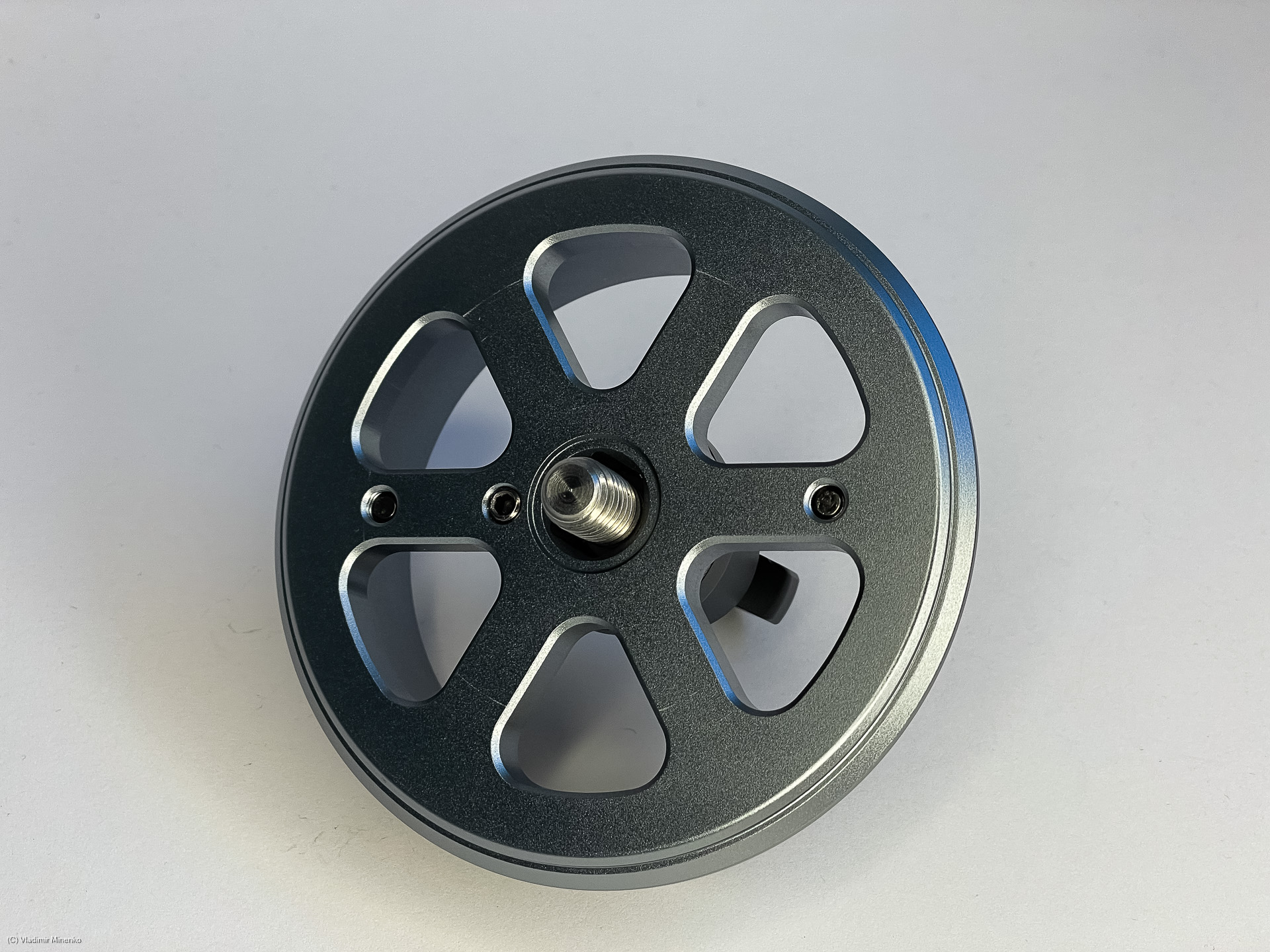
The side shapes of this mounting pates are totally different. Innorel uses a lock botton on the side (pressed by the finger on the picture below). This prevents the plate to fall out (together with precious equipment) if the main lock screw in not tighten.
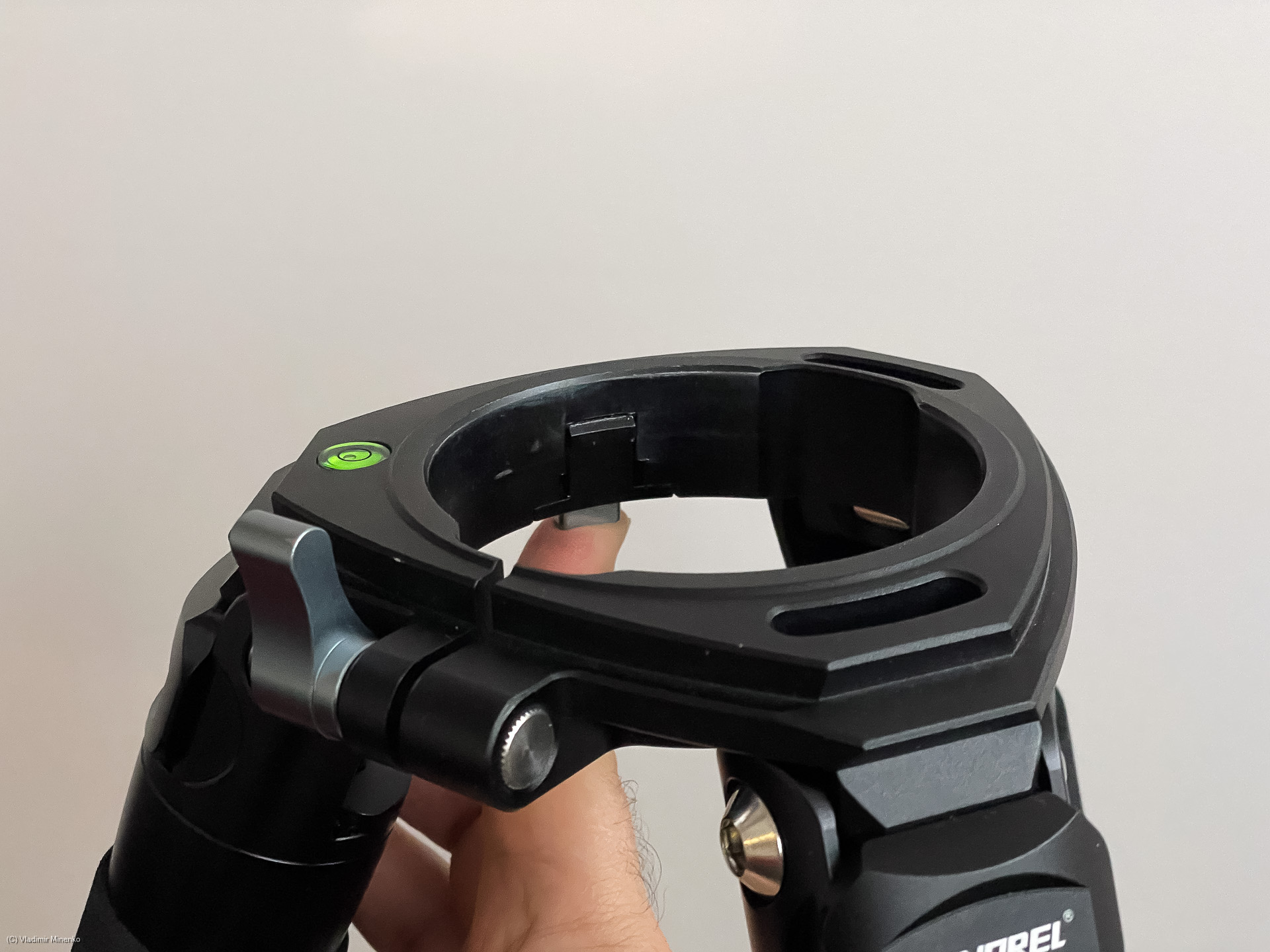
ZWO uses the same 85mm so that you can insert the mounting plate from the ZWO TC40 into the Innorel RT90C and tighten it well the main lock screw.
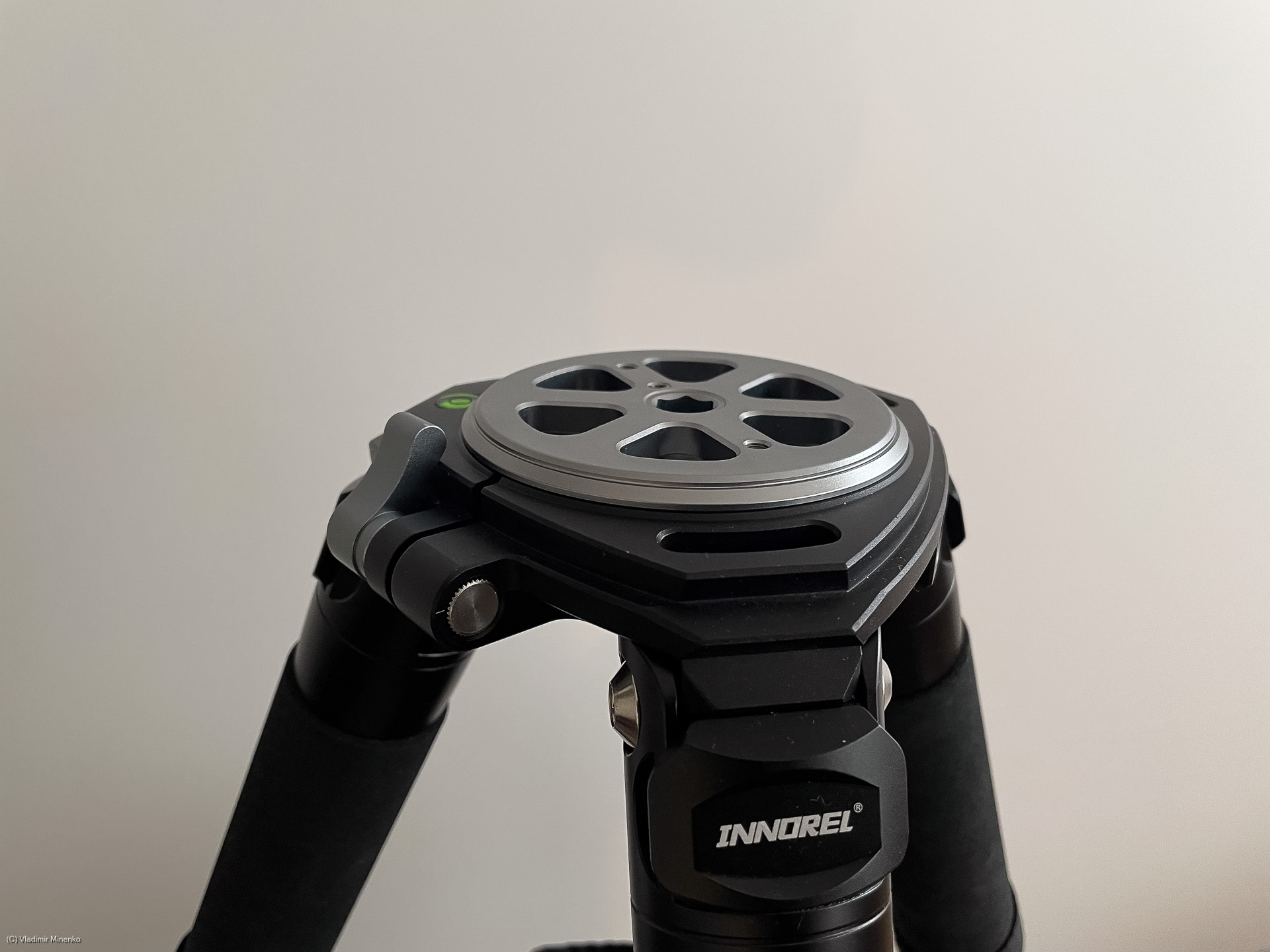
You can do the same with Innorel plate in TC40. On this picutre both mounts now sit on different tripods but with other mounting plates:
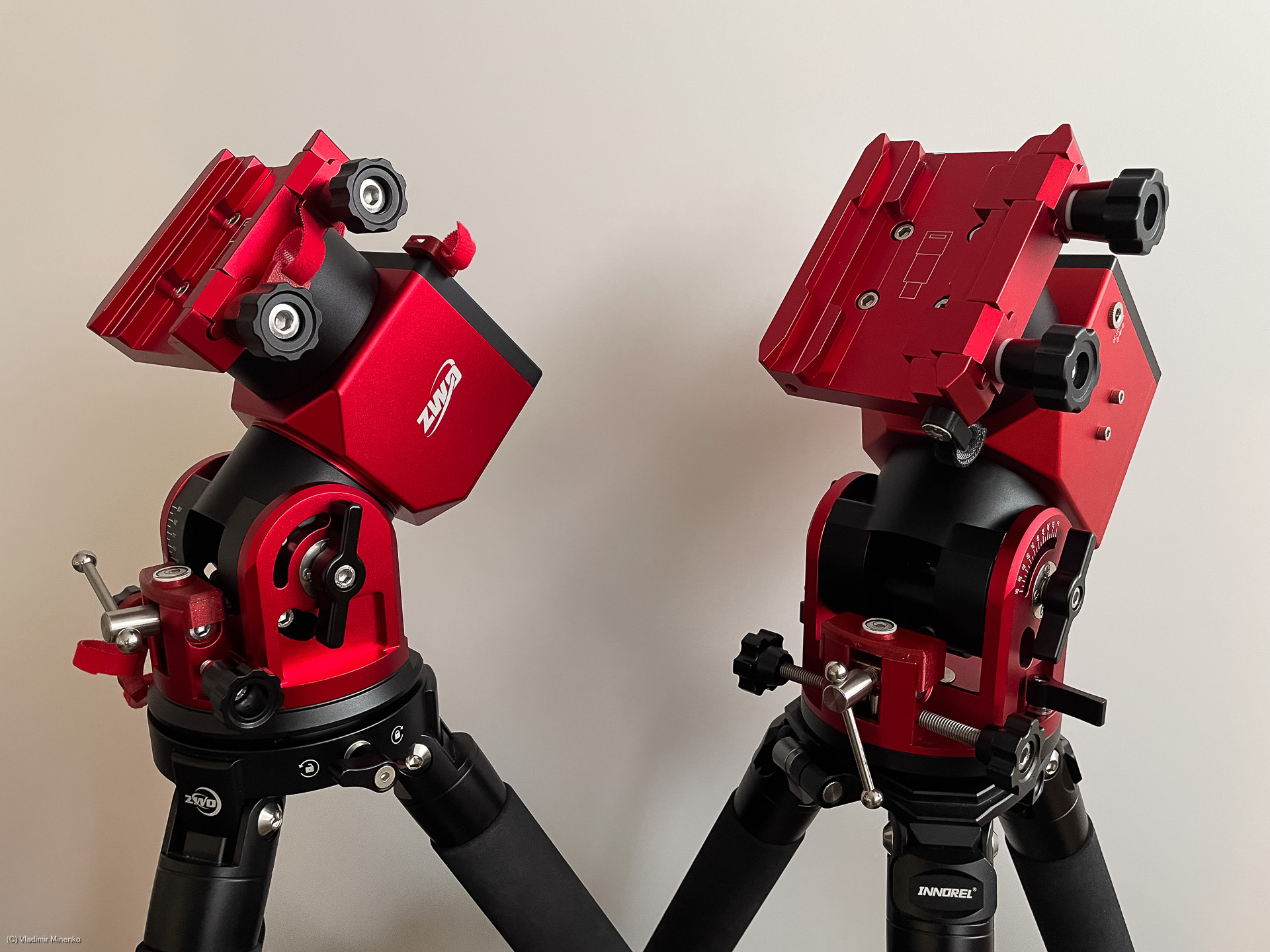
Well… They sit there… and you still have an impression that the original mounting plate would be better. The side shapes and the different locking mechanics make this difference.
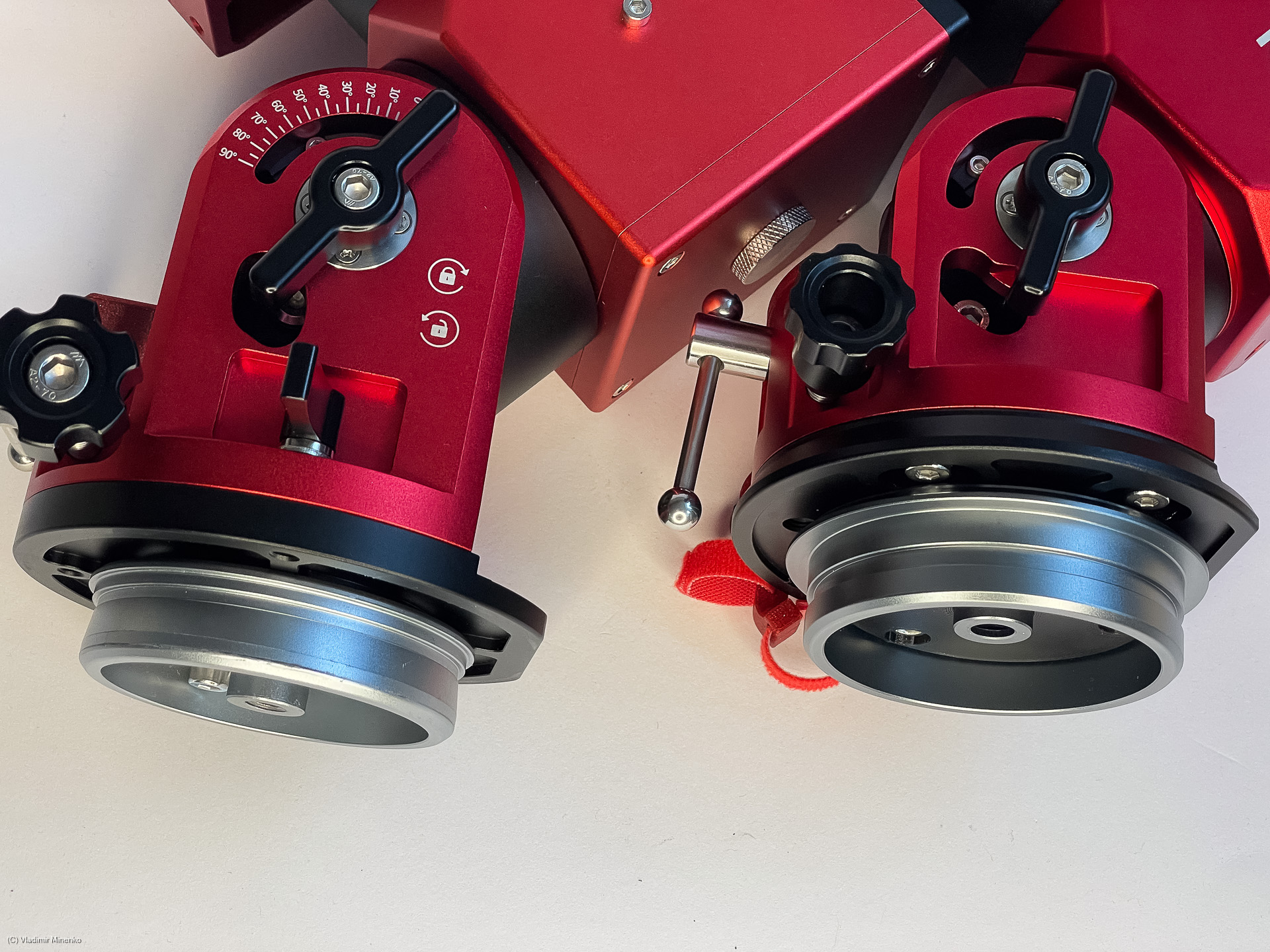
I guess ZWO save this more sophisticated locking and invest into the leg spreader which is not available for Innorel RT90C.
There other differences in the mounting plates (also called “pans” for some reasons) which are important for AM3 and AM5 users. The version from ZWO comes with three mounting holes which fit their counterparts on the bottom sides of the AM3 and AM5 mounts. These two pictures show the one from ZWO on the left side:
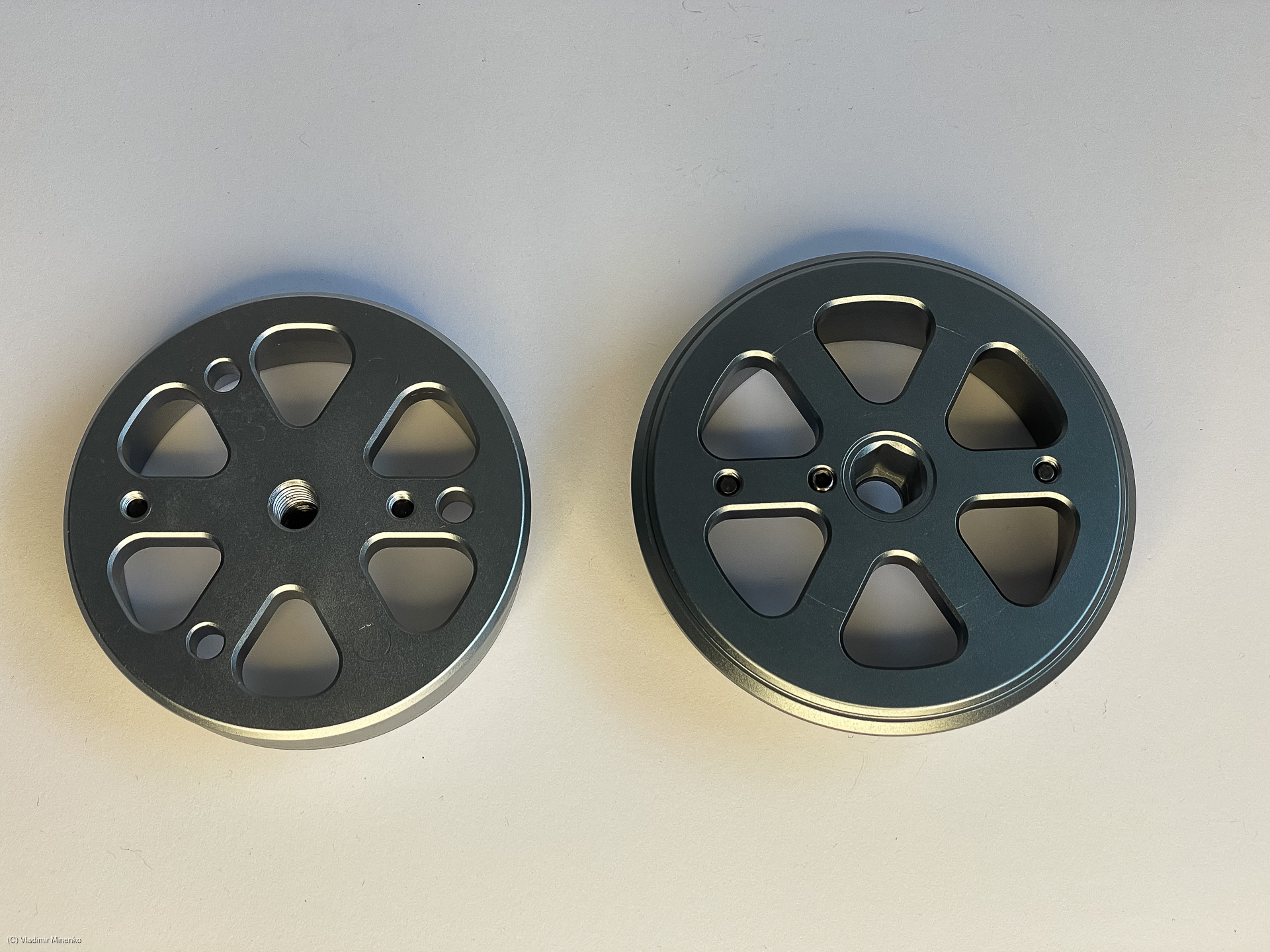
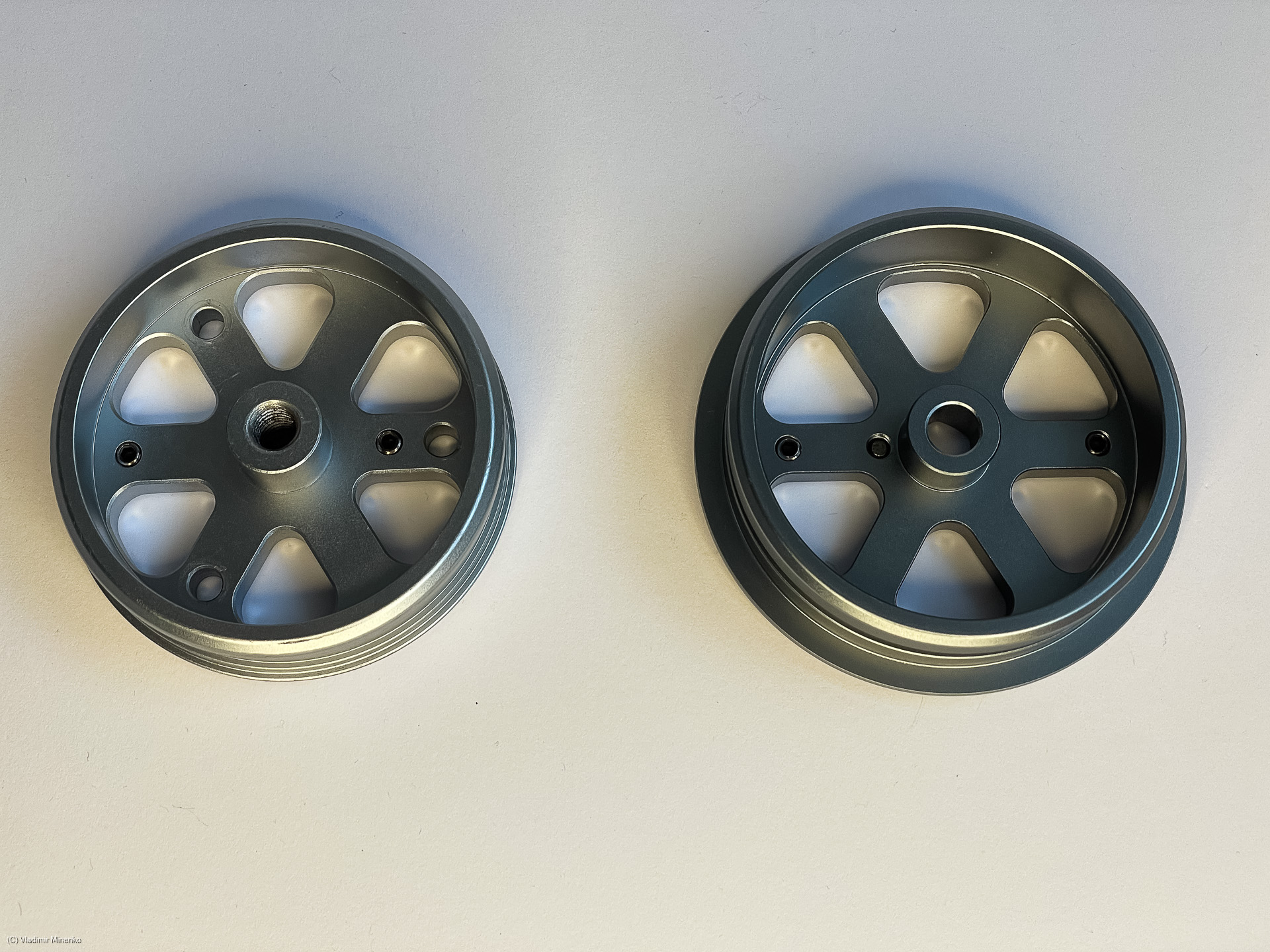
With this, you can only use 3/8″ screw provided with the Innorel RT90C to attach the AM3 or AM5 mount to the tripod, whereas the ZWO plate is mounted with three M6 screws directly to the bottom side of the mounts. This is more solid approach since the connection cannot get untighten by accidentally rotating the mount on the plate. This happened to me a few times and I was wondering why the mount started to wobble a bit. To compensate it, I created an adapter which can be inserted into the mounting Innorel RT90C mounting plate and mounted onto AM3 and AM5 mounts the same way as the original ZWO plate:
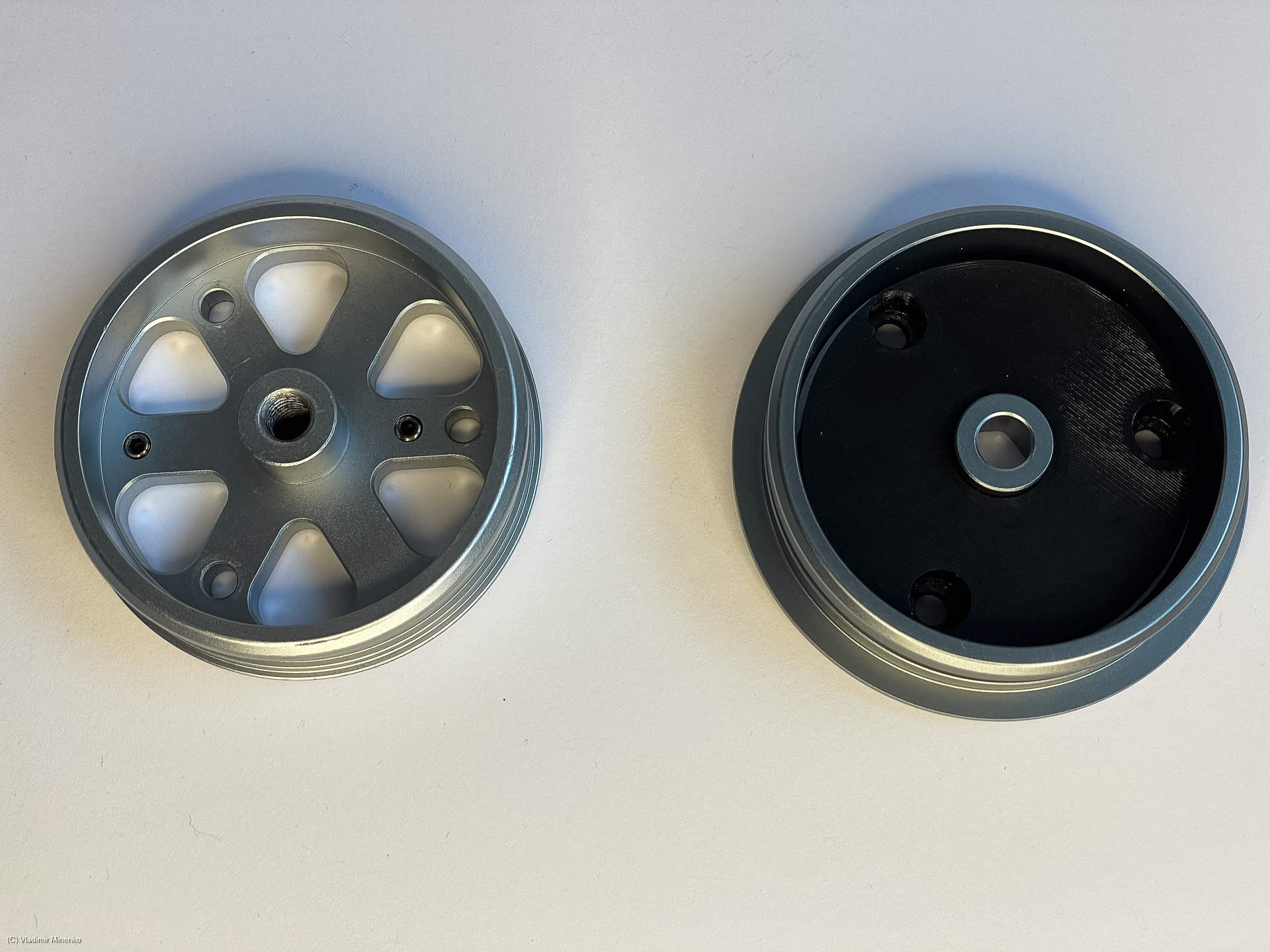
It is possible to order the Innorel RT90C tripod with a 75mm leveling “bowl” and an adapter for it. On this picutre, bBoth are mounted into one unit and placed into the tripod intead of the plate discussed above:

On the first sight, it does not look that this would work well for astrophotography, but I was really surprised how stable and rigid this contraction is. It makes it very easy to level the mount. I’m sure it will work well with small refractors.

The mount was leveled here really in seconds. The leveler on the picture has precision of 20-25″ and it still was easy to find the right spot. BTW, this leveler as well a the cable management guides are from the kit available in the Photastro shop.

Conclusions
If you already own a setup with the ZWO TC40 tripod, Innorel RT90C is a better choice than a second ZWO TC40 tripod, if you are also doing regular photography. Innorel RT90C is an excellent photography tripod for large equipment. It is still stable and rigid enough to carry small to mid-size refractors. A leg spreader would fully close the gap to TC40 in that sense. ZWO TC40 should still be the first choice if you do astrophotography only. It brings things astrophotographers need and omits those which they do not care of.
Got an opinion on this topic or found a mistake? Please add a comment.
2 Comments
Submit a Comment
Comments
This is an informative comparison. These tripods are similar but their differences may be important to potential buyers.
I have two suggestions regarding this information.
1) The TC40 also includes a set of spikes as standard equipment.
2) The PE200 Pier Extension accessory is an essential astro-focused accessory for users with longer telescope and equipment rigs.
Although the PE200 works with a assortment of tripods including the RT90C an all ZWO rig may hav some advantages over a mixed rig. Using a TC40 with the PE200 preserves the easy setup and secure quick release system designed by ZWO without purchasing additional adapter plates or skipping redundant clamps or locking mechanisms. For me, the standard tripod spreader and optional PE200 make the ultra portable TC40 a natural first choice for the ZWO mounts. However, as you have said, the versatility and additional height of the RT90C make it a tempting option, especially for photographers.
Hey, Don! Thanks for that details! I completely forgot that TC40 comes with spikes! I actually did not use them since It got AM5 and totally forgot they existed. And I forgot pier extensions as accessories too… I will correct the text accordingly.